By Professor Tiffany Banks On Tuesday, September 30th , students from my COMM 108: Foundations…
By Professor Megan Howard, English
I meticulously planned the museum trip for my classes. From Metro maps to Smartcard machine instructions to the worksheets for the assignments, I tried to think of everything. But there was one thing, I couldn’t control. The rain. The day of our trip also brought an end to a long dry spell in the DMV. The skies opened and it poured.
I was taking two ENGL101: Intro to Composition classes, over 40 students (plus their friends and family), on an ambitious trek to both the Smithsonian National Museum of American History and the National Portrait Gallery in one day. We were going on a search for American Identity.
This was the first trip to a museum for a good number of my students. I had asked them in class to raise their hands if they had been to a museum in D.C. “Do you mean actually going INTO a museum?” one student asked. “I mean, I’ve been down there and walked around the Mall, but I’ve never actually gone INSIDE.” I explained that going inside the building was, in fact, a requirement for going to a museum. I was excited to be able to introduce so many students to the Smithsonian museums.
I had many hopes for this trip. First, I was eager for my students to see that learning isn’t relegated to the four walls of a classroom. Learning can happen anywhere, anytime, and isn’t separate from the other parts of life. I was also eager to show my students that reading isn’t limited to just text in books. We can and do “read” many things, as part of our education and our everyday lives. Objects hold meaning. A necklace, a spoon, a deodorant dropped in the desert by someone crossing a border, those can all be read, decoded, and interpreted. They can all speak to us. Finally, I hoped the museums would challenge my students to think more critically about themselves, their lives, each other, and our country. I wanted them to examine something that they might not have considered before, an identity that might be central to their sense of selves, or perhaps not. I wanted them to ponder the following questions: Who is American? How do you think the term “American” should be defined? What criteria determines whether someone is an American?”
On Sunday morning, when the National Museum of American History opened, I met my students, dripping from the rain, at the Batmobile and gave them their instructions. Their assignment for the morning was to select three objects from the Many Voices, One Nation exhibit that represented some aspect of their personal definition of “American.”
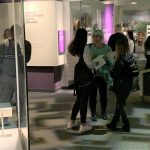 Worksheets in hand, they began their search in the Many Voices, One Nation exhibit. As I wandered through the exhibit, listening to students talking to each other about the objects, I was fascinated to see what captured their attention.
Worksheets in hand, they began their search in the Many Voices, One Nation exhibit. As I wandered through the exhibit, listening to students talking to each other about the objects, I was fascinated to see what captured their attention.
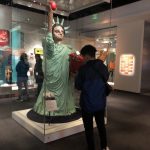 While several students were drawn to the Immokalee Statue of Liberty, most students selected objects that were unique to them.
While several students were drawn to the Immokalee Statue of Liberty, most students selected objects that were unique to them.
There was very little overlap in the object selection. Students chose everything from a statue of Uncle Sam to a cassette tape that held a recording from an immigrant father to his daughters back in the Philippines to an accordion played by a famous Tex-mex musician to an African cowrie shell necklace. My students were learning about what American means, while I was learning about my students and what was important to each of them.
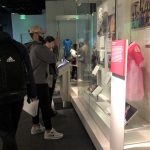
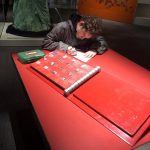
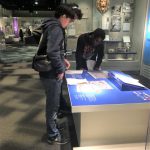
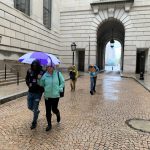 After two hours at the National Musuem of American History, it was time to head to our second museum, the National Portrait Gallery. A group of students elected to walk even though it was raining sideways, so we splashed through the puddles to continue our search for American Identity.
After two hours at the National Musuem of American History, it was time to head to our second museum, the National Portrait Gallery. A group of students elected to walk even though it was raining sideways, so we splashed through the puddles to continue our search for American Identity.
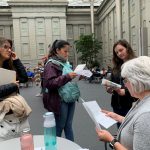 At the National Portrait Gallery, students had to select three portraits that in some way represented the definition of “American.” I ended up in a chair in the Kogod Courtyard establishing a home base for the students. I provided directions, suggestions, and input as students scattered into the museum, returned, and scattered again on their individual explorations.
At the National Portrait Gallery, students had to select three portraits that in some way represented the definition of “American.” I ended up in a chair in the Kogod Courtyard establishing a home base for the students. I provided directions, suggestions, and input as students scattered into the museum, returned, and scattered again on their individual explorations.
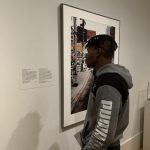 Students picked Barack Obama, Martin Luther King, Abraham Lincoln and John F. Kennedy, as I expected. But students also came back with portraits of Jim Brown, a running back for the Cleveland Browns; William Campbell, an African-American pilot; Diego Rivera, the Mexican artist; Juliana Westray Wood, an American actress; and Russell Means, American Indian activist, among others. I was interested to see which portraits connected with individual students and to learn why. Engaging with my students in this new environment, outside of the classroom, allowed me to get to know them each a bit better.
Students picked Barack Obama, Martin Luther King, Abraham Lincoln and John F. Kennedy, as I expected. But students also came back with portraits of Jim Brown, a running back for the Cleveland Browns; William Campbell, an African-American pilot; Diego Rivera, the Mexican artist; Juliana Westray Wood, an American actress; and Russell Means, American Indian activist, among others. I was interested to see which portraits connected with individual students and to learn why. Engaging with my students in this new environment, outside of the classroom, allowed me to get to know them each a bit better.
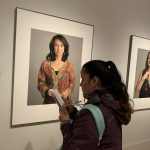
By the end of the long, wet day, I wondered how the students felt about their museum experiences. Was it worth it to them to spend the entire day squeaking across museum floors in soggy shoes with damp worksheets in their hands?
Here are a few things they told me:
“I love history and being able to take a course that also allows me to go to a museum is so amazing”
“It was a fun experience”
“This was my first time in these museums. It let me go see these beautiful places.”
“I liked [that] I was able to see all of these cool things and was able to learn more about America [through] all these different objects/paintings, and the best part was I got to do it with my friends/family.”
So, yes, it was worth it.




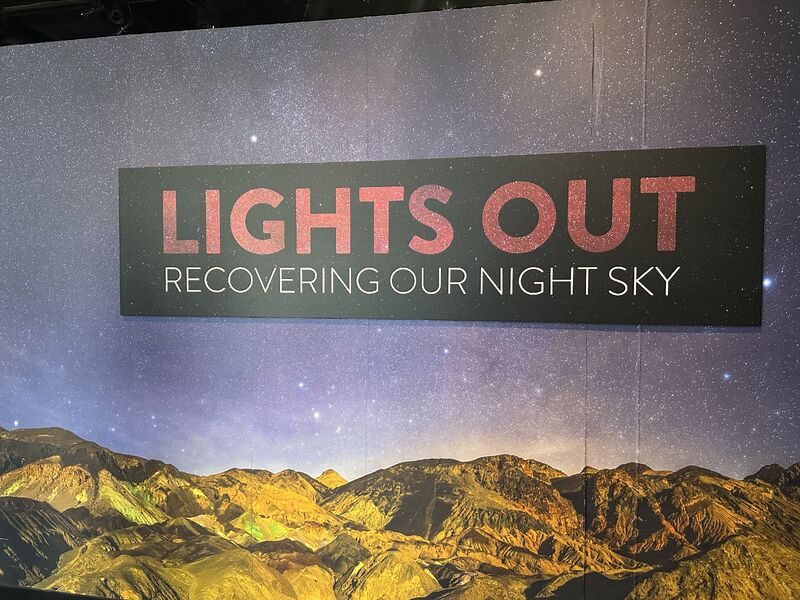
This Post Has 0 Comments